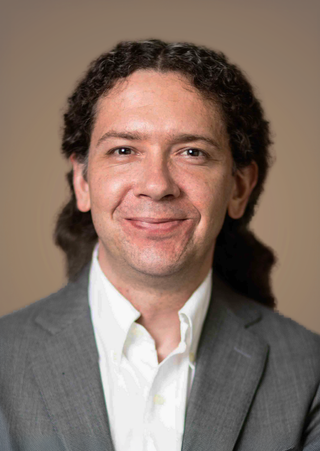The Canberra Times
By David Smith
We are allowing a greater US military presence in our region, but this may strain our relationship with China, DAVID SMITH writes
Until last week it was hard to see what the meaning of this presidential trip was. There was the symbolism of the 60th anniversary of ANZUS and Obama’s personal connections to the region, but we didn’t really know what was in it for him.
That he had cancelled trips twice before suggested he had little to gain by visiting Australia and leaving unattended the permanent crisis that is American domestic politics since the financial crisis.
But since the Asia-Pacific Economic Cooperation meeting it has become clear that this is the most politically important Australian visit for aUS president since Lyndon B. Johnson arrived in 1966 to shore up support for the Vietnam War.
Back then East Asia was the primary focus of US defence and foreign policy, a fact which greatly enhanced Australia’s strategic importance to the United States and ultimately created serious strains between the two governments as Australia’s commitment to the war waned.
Richard Nixon’s loathing of Gough Whitlam was the probable reason he never made a presidential visit in his second term.
As Obama now tries to refocus America’s attention on the Asia-Pacific, Australia is eagerly accepting new responsibilities as an ally that again underscores its value to the United States.
However, the new US military presence in Australia is likely to create serious tension with China, with whom we have recently enjoyed a very profitable relationship. This could in turn create considerable discomfort between Australia and the US should we decide at some future point that it is no longer worth it.
Addressing Parliament yesterday, Obama announced he had made the decision as President that the United States would take on a larger role in shaping the future of the Asia-Pacific region. He explicitly linked this new role to America’s gradual disengagement from the Middle East.
After a decade, the President said, in which America had fought two wars which ‘‘cost us dearly in blood and treasure’’, the country was now turning its attention to ‘‘the vast potential of the Asia-Pacific region’’. He said the United States had always been a Pacific nation, with his own biography as supporting evidence.
Obama spoke of the Asia-Pacific as the fastest growing region in the world, with more than half of the world’s economy, population and nuclear power. As such, it is vital to his highest priority of creating jobs back home and growing the American economy. More broadly than this, the future of Asia would decide whether the next century
would be marked by conflict or cooperation, hence the need for renewed American leadership in the region.
Practically, this means an increased US defence presence in a number of countries, including Australia, which will eventually see rotations of 2500 marines as well as US aircraft. Obama stressed that deep impending cuts to defence budgets will not affect American military spending in Asia. This is probably the most notable point in his parliamentary address for Americans, who face difficult decisions about which budgetary sacred cows must be slaughtered to ensure the country’s long-term solvency.
While many countries will welcome increased US military involvement in the region, China certainly will not. Obama spoke several times during his visit of the importance of a ‘‘rising and peaceful China’’, while also speaking of the need for the US to reinforce the existing ‘‘security architecture’’ of the region, which sounds like containment of China. Within hours of the Obama/Gillard press conference, Chinese state media was rebuking Australia for using military bases to ‘‘help the US harm Chinese interests’’, and warned we would be ‘‘caught in the crossfire’’ if we ‘‘played China for a fool’’.
Obama’s new American military commitment to the Asia-Pacific has been coupled with an expansion of the Trans-Pacific Partnership free trade agreement – which currently does not include China – and increasingly belligerent rhetoric about China’s currency, which was on full display at the APEC meeting last weekend.
The United States has long insisted that China’s currency is under-valued by perhaps 25 per cent, and Obama reiterated in his Australian visit that future regional economic cooperation depended on all countries ‘‘playing by the rules’’, a clear reference to China’s practice of massive intervention in currency markets to keep its exports cheap.
The President has fashioned all this for a domestic audience. He will not be able to make American exports competitive again by the next election, but he can claim he is pushing back against the unfair Chinese practices that many Americans blame for the decline of their own industries. In fact, Chinese manufacturing also had a deeply symbiotic relationship with the American credit bubble.
During the Bush years, Federal Reserve Chairman Alan Greenspan held interest rates below inflation levels to spur borrowing and consumption during a long period of sluggish economic growth. President Bush famously urged Americans to go out and spend more after 9/11.
No one benefited more from this than Chinese manufacturers, who supply Americans with perhaps half of their consumer goods. Obama told donors in Hawaii at the
weekend that it would take him more than one term to undo the damage done over a decade. As he withdraws troops from the Middle East and attacks Chinese manufacturing, Obama tries to remind domestic audiences of the scale of the problems he inherited.
By assuming a new leadership role in the Asia-Pacific, he is trying to create a positive foreign policy agenda of his own. By announcing it in Australia he has committed us to it, a commitment we have.
Dr David Smith is a lecturer in American politics and foreign policy, United States Studies Centre, University of Sydney.





